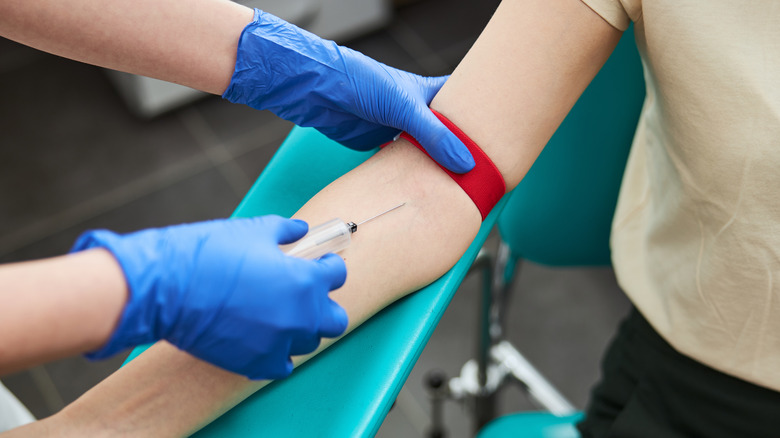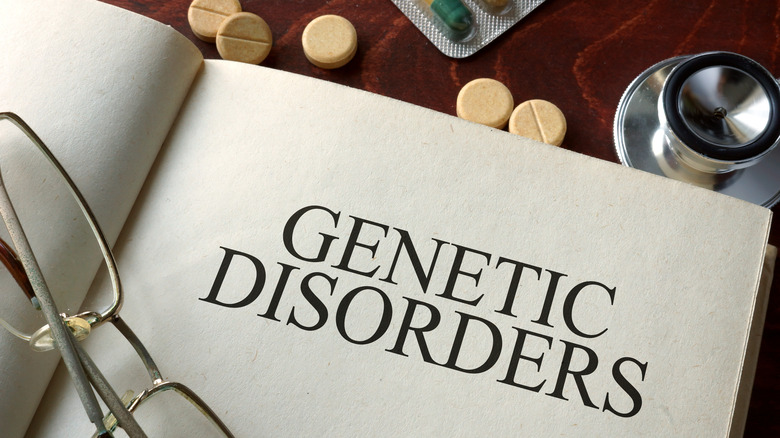What Is Sickle Cell Disease?
You may have heard of a sickle cell before, but do you know what sickle cell disease is or how it's transmitted? Being educated about the risks that come with sickle cell disease could change someone's life in the future.
Usually, red blood cells within the body are round-shaped, described as a disk or doughnut with an indentation in the center (per Cleveland Clinic). These cells are used to transport oxygen to all body tissues for energy and release the carbon dioxide that we eventually breathe out through the lungs. In sickle cell disease, however, the red blood cells are different.
The term, sickle, refers to the shape red blood cells take when you have the disease (via Centers for Disease Control and Prevention). A sickle is a farm tool shaped like the letter C, which is what these abnormal cells look like rather than round. The cells also become harder and stickier than usual, which, when combined with their abnormal shape, leads to problems. Instead of traveling freely through the body, they get stuck and clog the flow of blood in an area or die early, leading to low amounts of red blood cells. These issues obviously can cause some serious problems.
Sickle cell is an inherited disease
Sickle cell disease can only be transmitted through genes, reports the National Heart, Lung, and Blood Institute. This occurs when a newborn child receives a flawed hemoglobin S gene from each parent, or one parent passes on a faulty hemoglobin S, and the other parent passes on another type of faulty hemoglobin. Interestingly, if you only receive a single hemoglobin S gene, then you don't have sickle cell disease yourself, but you can take part in passing it on to any children using the above combinations. A blood test can be administered to determine if you have faulty hemoglobin S or sickle cell disease (per Centers for Disease Control and Prevention). Keep in mind, according to the National Heart, Lung, and Blood Institute, the disease affects an estimated 100,000 people in the U.S.
Since sickle cell is present at birth, it is important to know the symptoms that may occur. Yellowing of the eyes, mouth, and skin, pain from blocked blood flow, anemia, acute chest syndrome, pooling in the spleen, priapism, and stroke can all occur and may be mistaken for other health problems (via Johns Hopkins Medicine). Treatment for sickle cell disease entails managing symptoms with hydration, blood transfusions, pain medications, vaccinations, and hydroxyurea. The only possible cure for the disease is through a bone marrow transplant, but it isn't an option for everyone. While sickle cell is a lifelong inherited disease, it can be managed with proper monitoring, caution, and healthy eating.


